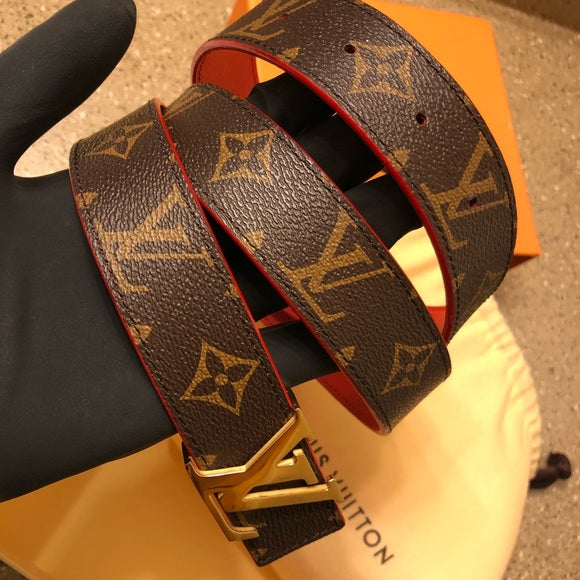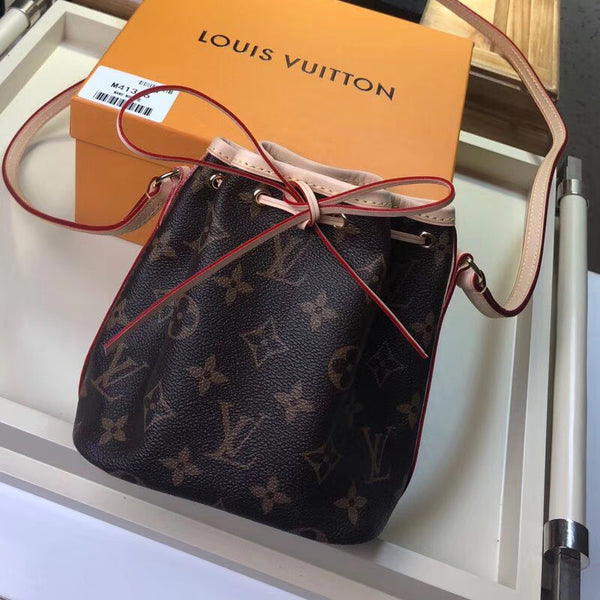How To Authenticate Louis Vuitton Bag
Louis Vuitton bags – the crown jewel of everyone’s bag collection. And it doesn't even matter what model it is. The most important thing is that you have a nice, authentic LV bag. But how can you spot the difference between a fake and a real bag when buying it?
In this article, we have gathered more than 5 methods of spotting a fake Louis Vuitton bag. So, buckle up, ‘cause we’re in for a ride!
How To Legit Check a Louis Vuitton Bag?
- The Main Patterns
- The Outer Logo Tabs and Tabs
- The Inner Logo Labels
- The Date Codes
- The Lining
- How do I know if my Louis Vuitton bag is real?
- How much does it cost to authenticate a Louis Vuitton bag?
- Do all LV bags have a serial number?
- Where Can I get My Louis Vuitton Bag authenticated?
Louis Vuitton Bag Real vs Fake: The Main Pattern
The Louis Vuitton handbags use multiple patterns in their styles, which also vary in color. This Louis Vuitton authentication guide will cover three of the most popular styles used in vintage and modern handbags.
The Damier Pattern
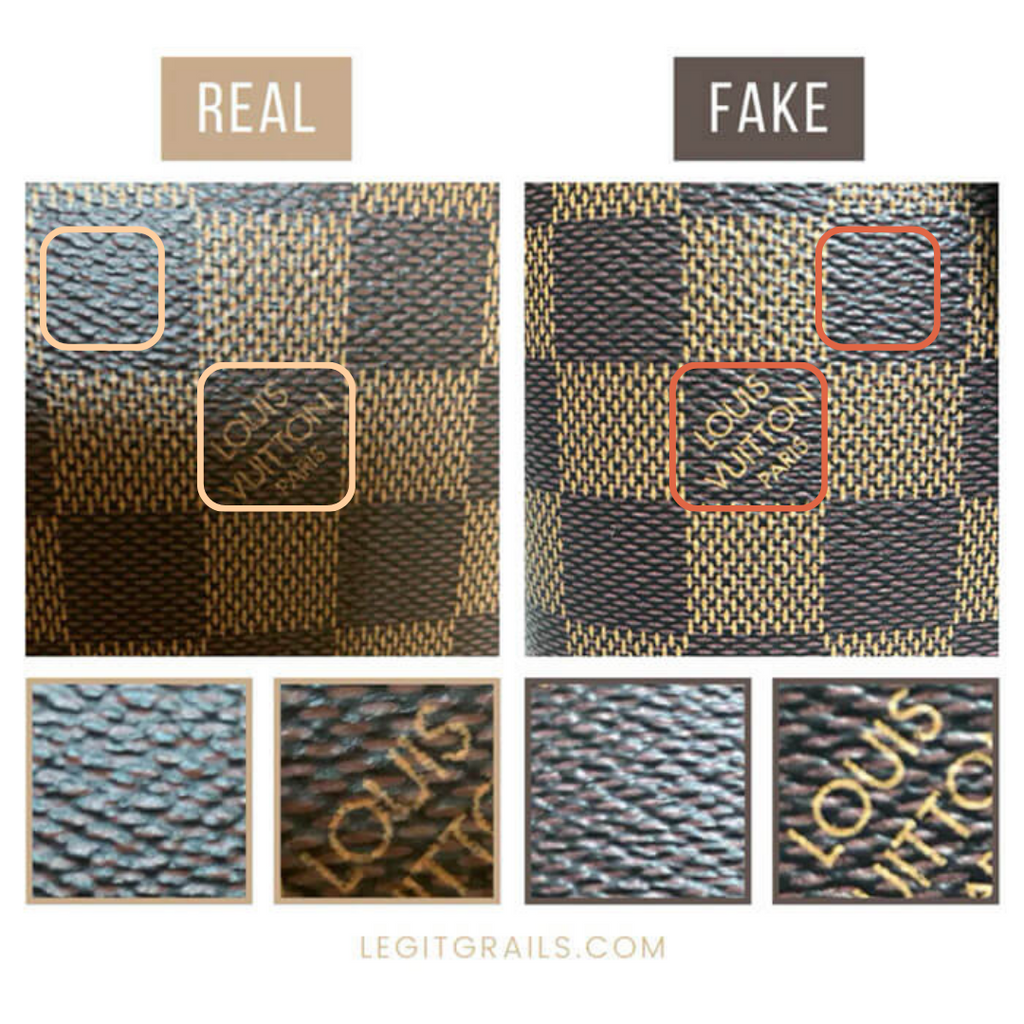
The 'checkerboard' pattern in LV handbag designs has garnered immense love from bagaholics. This captivating design comes in various colors, with the example provided showcasing the exquisite 'Damier Ebene' version.
When authenticating a Damier Ebene pattern, you should observe the canvas texture. The genuine canvas boasts a highly defined texture, whereas the counterfeit handbag lacks the same clarity in its grain appearance.
Another critical aspect to consider is text printing and its quality. A side-by-side comparison reveals that the authentic Louis Vuitton logo has bolder characters with a slightly yellowish hue, while the fake LV logo exhibits an orange tint with slimmer letters.
The Monogram Pattern
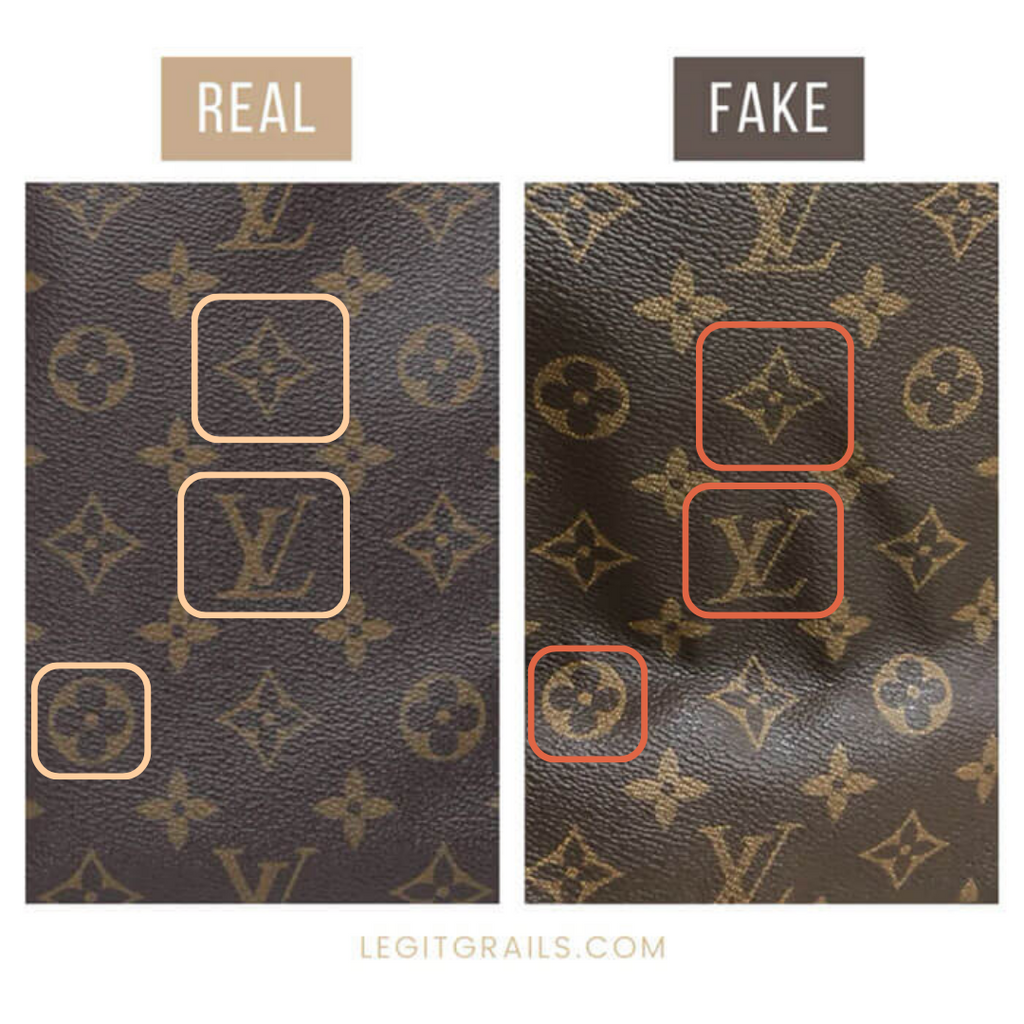
The LV monogram canvas is one of the most easily recognizable patterns in the fashion world. Despite the continuous efforts by replica LV producers to perfect this pattern over the years, certain flaws persistently plague the counterfeit versions.
Firstly, the texture remains a common area of discrepancy, much like the previous method mentioned. The authentic Louis Vuitton canvas proudly exhibits a well-defined grained texture, which sets it apart.
Secondly, the colors, as previously emphasized, play a crucial role. Ensuring that the printing matches the right shade and adheres to accurate shapes is essential. Often, replicas falter when it comes to the details of the pattern, either appearing too small or overly large.
In addition, attention should be given to the placement of the details and the spacing between them. Consistency with the original model and the size of the handbag is vital to maintain the integrity of the pattern.
The Engraved Pattern
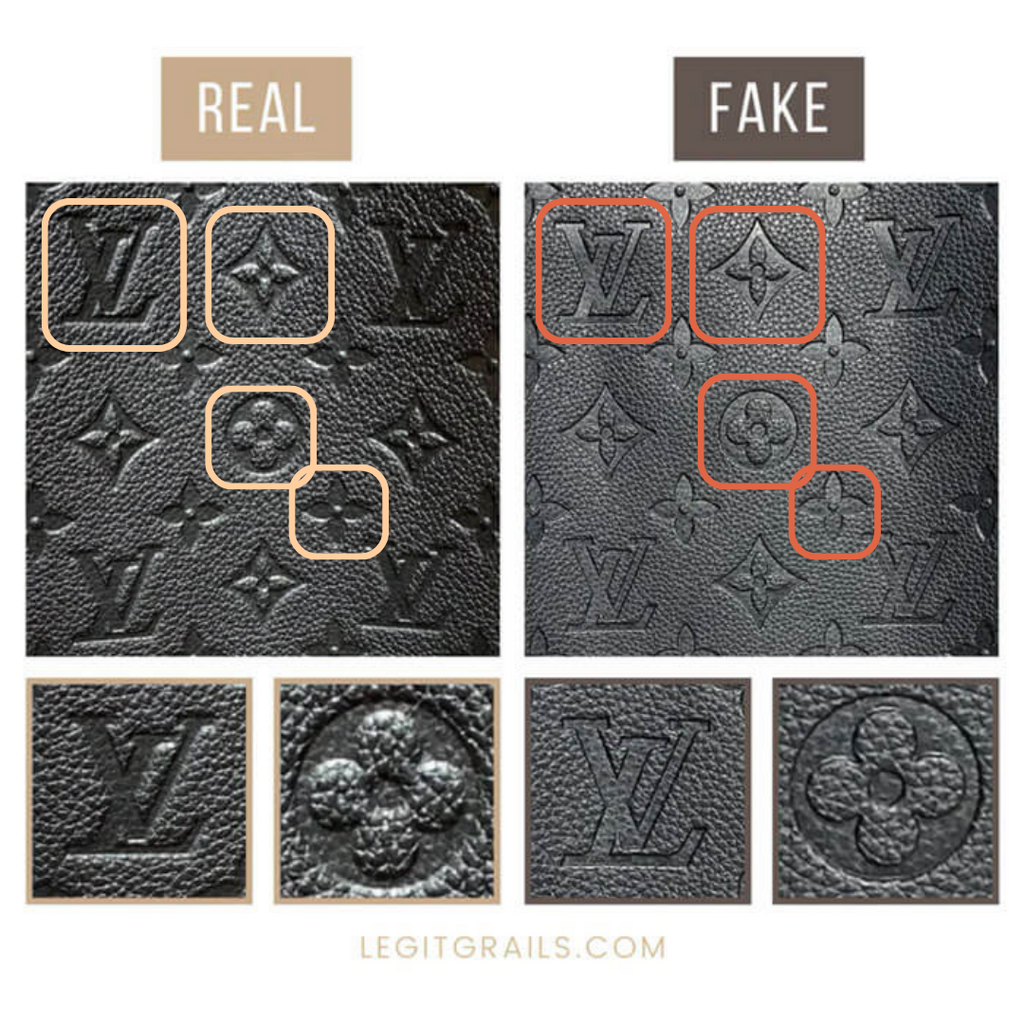
When examining the engraved monogram pattern, our primary focus shifts to the engravings themselves. In the following comparison of real vs. fake Louis Vuitton monograms, the disparity in engraving quality becomes evident.
The authentic engravings boast a heightened prominence as they are meticulously carved deeper into the leather. Conversely, the replica pattern appears considerably flatter.
Moreover, another noticeable distinction lies in the texture of the leather. Upon close examination, the authentic leather exhibits a more pronounced tumbling effect, setting it apart from the less textured surface of the fake handbag. Please refer to the provided comparison for a clearer visual representation.
How to Spot Fake Louis Vuitton Handbags: The Outer Logo Tag/ Tab
The outer logo label is another important aspect of the LV bag legit check process, as it offers several details to be verified. Here we will cover four types of outer logo labels and share some tips on how to spot a fake one.
The Ring Logo Tag
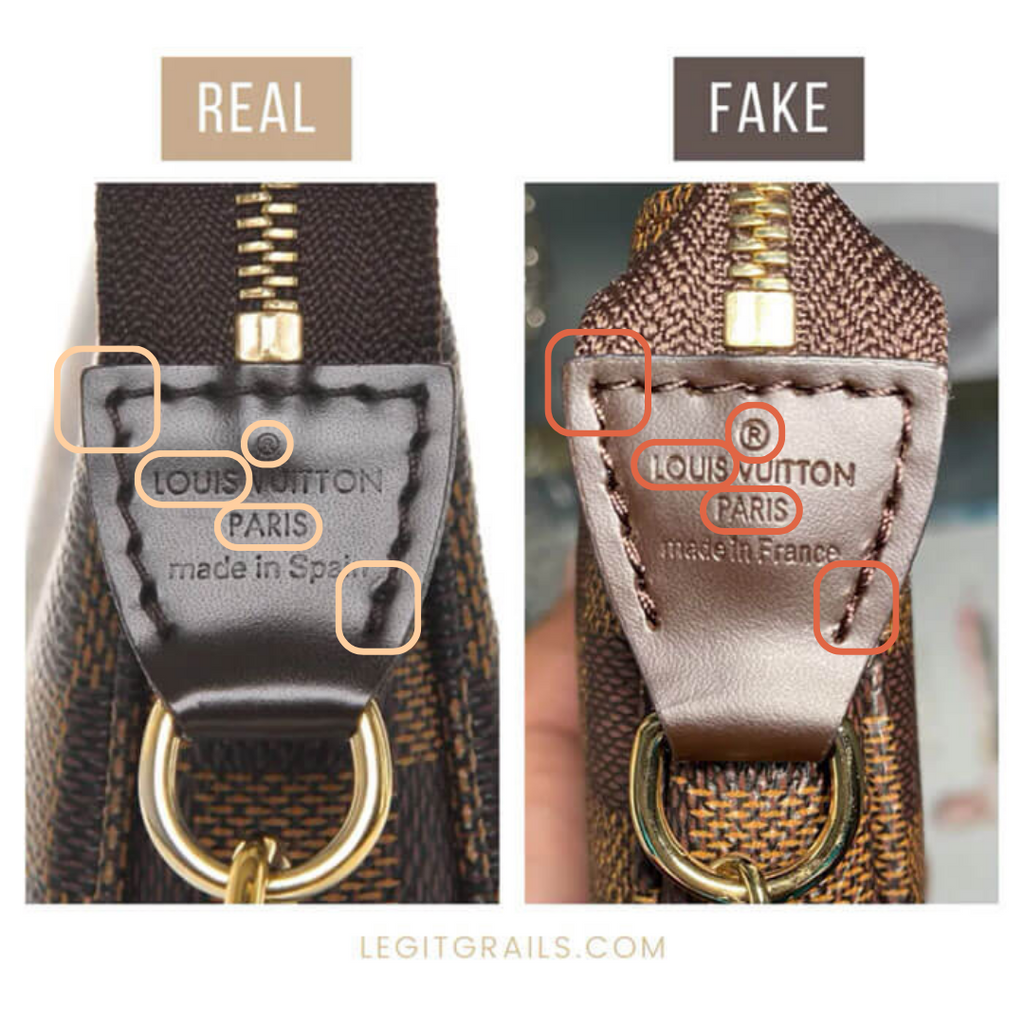
This particular Louis Vuitton logo label is commonly featured in the most popular pochettes and handbags. Here, it's crucial to carefully examine the overall appearance of the label and ensure that all its elements align correctly.
To begin, verify the shape of the tab and ensure its accuracy. Counterfeit Louis Vuitton bags frequently have slimmer and more triangular tabs than they should. It's important to remember that the colors of these tabs may vary depending on the purse's condition and the year of its release.
Next, pay close attention to the stitching and confirm that the right threads are used. Authentic Louis Vuitton bags employs high-quality, thick threads that match the shade of the tab itself. Conversely, counterfeit Louis Vuitton bags often use thinner threads, revealing their inauthenticity.
Additionally, focus on the text within the tab and assess the correctness of the fonts used. One of the most prevalent mistakes made by counterfeit manufacturers is employing incorrect fonts, particularly in the ® symbol, which results in an oversized appearance.
The Triangular Logo Tag
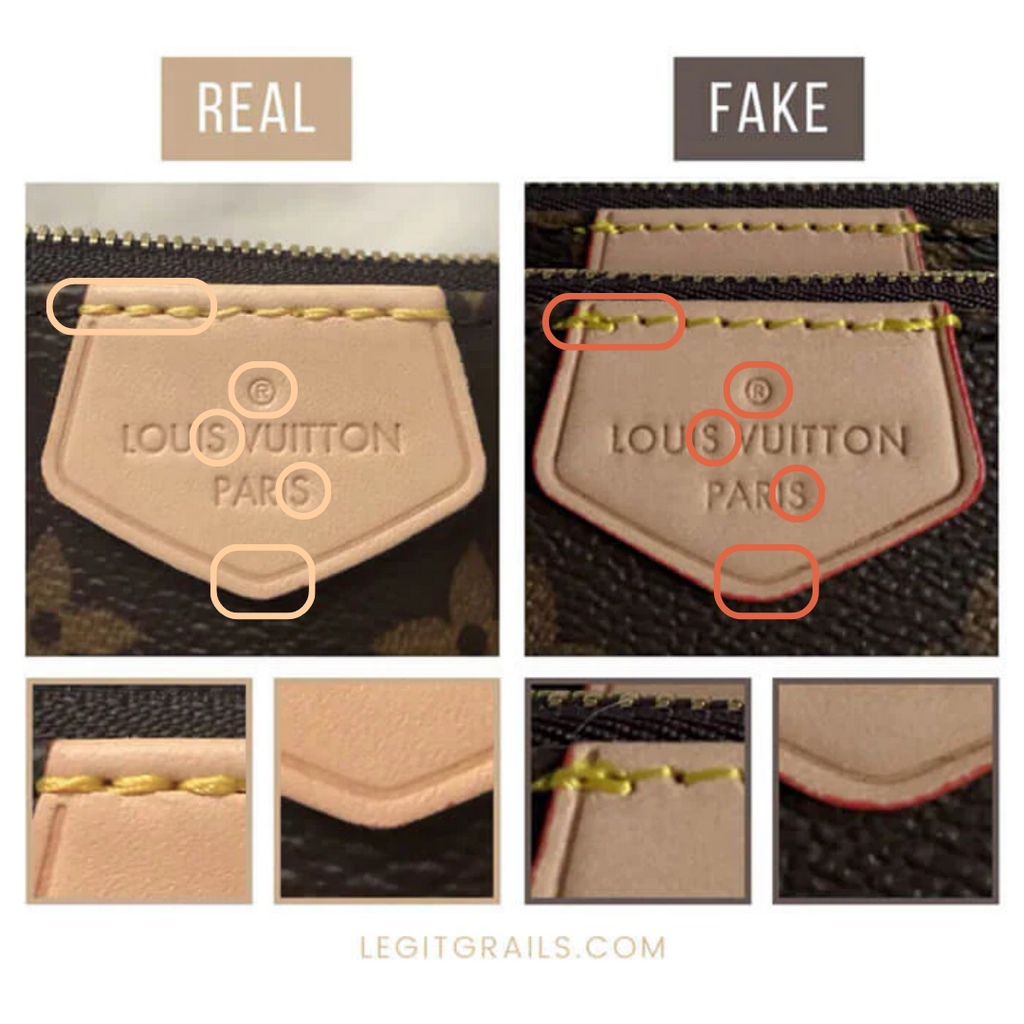
These distinctive triangular logo tags are prominently featured in larger pochettes, including the esteemed Louis Vuitton multi-pochette accessories. When scrutinizing these tags, apart from considering the fonts and overall appearance, our attention should be drawn to the stitching and the tag's overall presentation.
The top yellow stitching on this tag often appears slightly untidy, even in genuine retail Louis Vuitton bags. However, there exists an acceptable level of controlled messiness, as seen in the authentic example below, compared to the unacceptable flaws evident in counterfeit versions. Notably, authentic Louis Vuitton logo tags commonly display a double-stitched top, while replicas frequently overlook this fine detail.
Another noteworthy aspect pertains to the tag's overall look, encompassing its shape and engraved outline. The authentic tab boasts a distinct triangular shape, whereas the replica's appearance tends to be more rounded. Additionally, it is crucial to observe the engraved line outlining the tag, ensuring it maintains an adequate width as per authentic specifications.
The Base Logo Tab
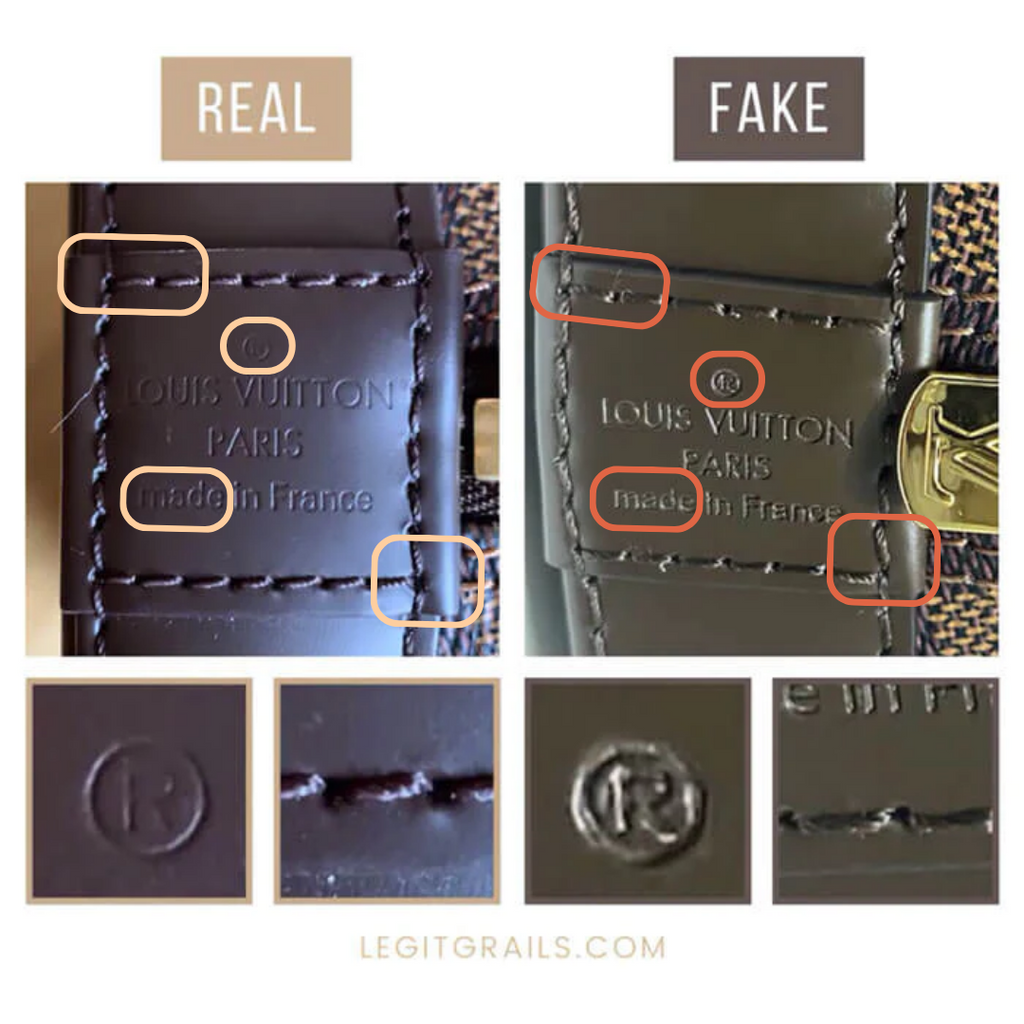
This approach proves valuable when authenticating the Louis Vuitton Alma bag and other models featuring the base logo tab. As previously mentioned, it is essential to reiterate the key features that require verification in logo tabs, such as the stitching, etc. However, in this instance, particular attention should be directed towards the placement of the text and the tab's dimensions.
Replica producers often make mistakes in accurately replicating the size and dimensions of the tab, leading to misplaced text. In the real vs. fake Louis Vuitton bag comparison provided below, take note of how close the replica text is placed to the edge, a telltale sign of its inauthenticity.
Interested in other Louis Vuitton authentication guides? Check out: Louis Vuitton Multi Pochette Accessories, Louis Vuitton Speedy Bag.
The Belt Logo Tab

In this case, we are examining a rarer type of outer logo tag, which can be found in the Louis Vuitton Montsouris Backpack. It is essential to consider all the methods mentioned above, including scrutinizing the shape, fonts, stitching, and engravings.
However, this specific type of tag offers an additional clue that can aid in determining the item's authenticity.
Observe how the authentic tab below exhibits a flat and smooth appearance. In contrast, the counterfeit Louis Vuitton backpack displays a tab that looks inflated. This distinction can be a valuable aid when employing the tag method to authenticate the item.
The Inner Logo Label

Another critical aspect to examine in the authentication process is the inner logo labels, which come in different shapes and sizes. Our focus will be on the most commonly used type found in the majority of medium-sized Louis Vuitton handbags.
When inspecting the inner label, the first thing to consider is the stitching, paying close attention to both the pattern and placement. Authentic stitching is usually positioned quite close to the edge of the tag, with sharp corners. Conversely, the counterfeit reference provided below illustrates the inconsistency in fake stitching.
Fonts play a pivotal role in verifying the label's authenticity, and this applies to all text details. Take note of how narrow the characters appear on the replica label compared to the bulkier and more substantial appearance of the genuine letters.
When the text on the inner label is printed, our scrutiny remains on the text quality. A significant giveaway of a fake label is the text appearing excessively thick, as can be seen in the comparison below with the ® symbol.
Similar to the 'Base Logo Tab' method mentioned earlier, counterfeit LV bags may possess incorrect dimensions for the inner labels, resulting in misplaced text. This can be another indicator when assessing the authenticity of the item.
Fake vs Real Louis Vuitton Bag: The Date Code

The date stamp label found inside any Louis Vuitton handbag plays a vital role in the authentication process. Understanding the significance of the text in this label is the first step. For bags released after the 1980s, the first two letters indicate the production location, while the following numbers specify the date.
To decode the date stamp, take note that the 1st and 3rd numbers represent the production week, while the 2nd and 4th numbers correspond to the production year. Refer to the list below to comprehend the meaning of the letters; however, exercise caution, as certain letters may indicate multiple locations. The production location is accurate when it aligns with the country specified on one of the logo labels (Spain, Italy, etc.).
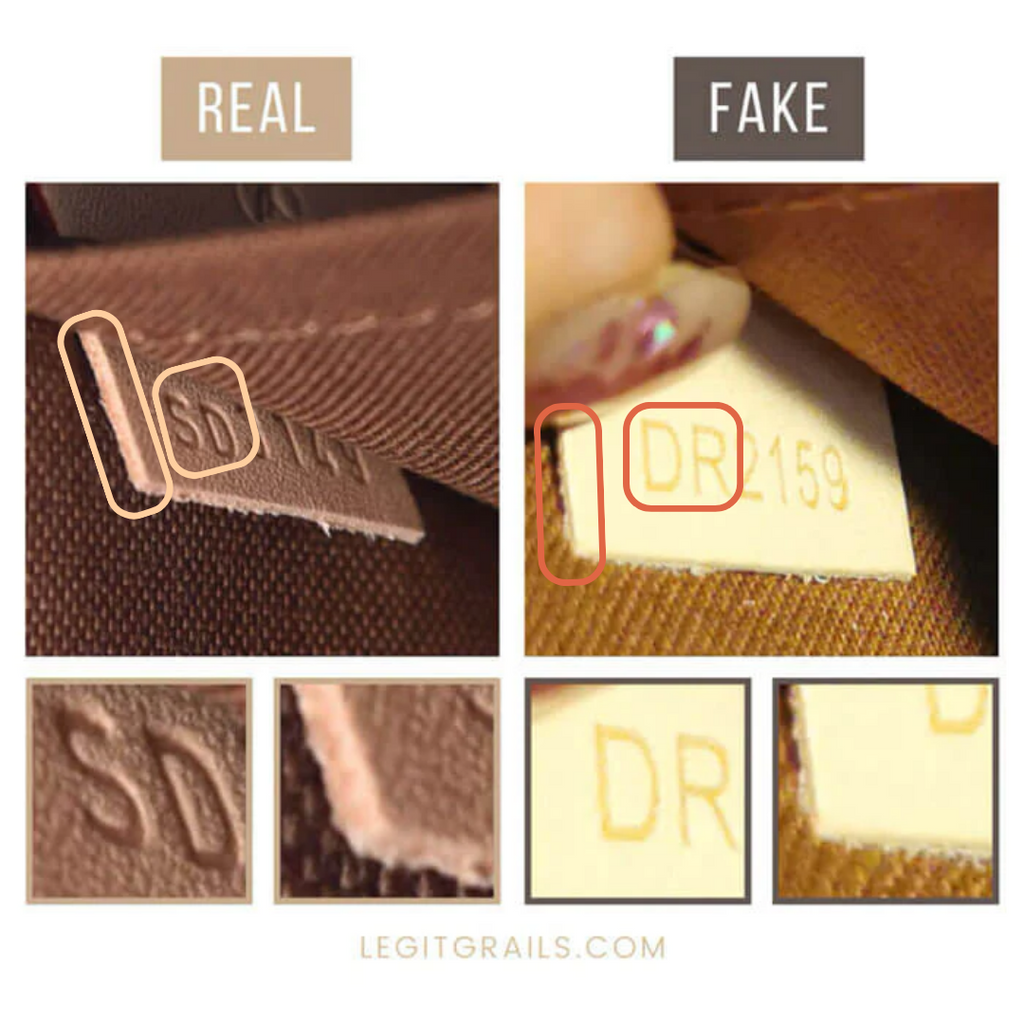
Once you've verified the date stamp's accuracy, focus on its design. Replica tags often feature engravings that are not dense enough, serving as a clear red flag. Additionally, pay attention to the thickness of the label, as replicas tend to be thinner compared to genuine ones.
Louis Vuitton Bag Legit Check: The Lining
The last but not the least method in the Louis Vuitton authentication process is the inner lining verification. Different models use different kinds of lining, yet the LegitGrails team has decided to focus on the suede and canvas types.The Suede Lining

This particular material finds its application in several LV handbags, including the Louis Vuitton OnTheGo Tote bag. It is essential to ensure that the suede's quality is of a high standard, characterized by its thickness and length.
Another critical aspect to consider is the colors used in the material. Authentic versions typically boast deeper and richer shades, making color accuracy an essential factor in the authentication process.
The Canvas Lining

This specific type of lining is frequently found in the LV Neverfull Pochettes, which, unfortunately, are among the most commonly counterfeited purses. When authenticating, it is crucial to examine the texture of the canvas, as replicas often have a denser appearance.
Additionally, pay close attention to the alignment of the text, ensuring it matches the precise positioning found in authentic versions. These details can help distinguish genuine items from counterfeit ones.
How do I know if my Louis Vuitton bag is real?
The quickest and most reliable way to authenticate your Louis Vuitton bag is to inspect the inner labels. Also, the famous Louis Vuitton pattern may give out a lot of replica models.How much does it cost to authenticate a Louis Vuitton bag?
Our professional Louis Vuitton authentication services start at a price of 15$. Live chat with experts, authenticity certificate included.Do all LV bags have a serial number?
Louis Vuitton bags do not have a serial number, instead, they contain date codes stamped on the inner labels.Where Can I get My Louis Vuitton Bag authenticated?
The most reliable Louis Vuitton authentication service is available with our team here at LegitGrails. You can receive your results as fast as in 30 minutes, authenticity certificate and thorough explanations of the outcome included. Check out: Louis Vuitton authentication service.



